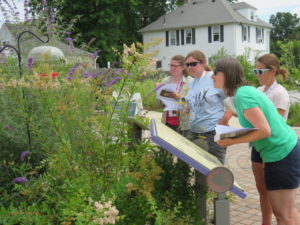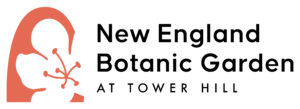Nature and Design: Connections Between Science, Engineering,
and the Natural World
A Professional Development Institute for Grades 6-12 Educators

When designing and constructing our built environment it is imperative to consider the impact on the natural environment. During this Institute, participants explored how buildings and landscapes work together and how nature inspires us to create.
At New England Botanic Garden at Tower Hill, educators learned how to build a pollinator garden to support a variety of types of pollinators. They observed pollinators at work and dissected a tulip to better understand how plants and pollinators work together. Teachers also observed an anchoring phenomenon, for which they generated a list of notices and wonders, an initial model, and questions for a driving question board. With instructors from the Blackstone River Valley National Heritage Corridor, educators furthered their understanding of pollinators and explored pollinator and rain gardens at the Blackstone Valley Heritage Center in Worcester. They also investigated features of the LEED certified building and learned from a variety of guest speakers who shared information on rain gardens, the Blackstone River watershed, and the Worcester Green Plan. In an inquiry-based hands-on investigation, they designed and built a model water wheel to make the connection between Worcester’s industrial past and the site as it exists today.
The Institute continued at Broad Meadow Brook Conservation Center and Wildlife Sanctuary, where educators started to make connections between the watershed, the natural environment, and the built elements of the site. Through a nature hike and site exploration, educators identified features of the site that support the natural environment, noticed how water moves through the site, and observed wildlife interacting with the site. The week concluded back at New England Botanic Garden at Tower Hill where educators identified the importance of the urban tree canopy. They identified the benefits and challenges of urban trees, identified the amount of tree cover in neighborhoods in the Worcester area, and measured the air quality and temperature near trees at the site. Educators combined their experiences from throughout the week to create a plan for a city that took into consideration buildings as well as green spaces. Throughout the week, Institute instructors wove pedagogy throughout the science content, supporting participants in the use of guided inquiry, phenomena, and the Science and Engineering Practices in their classrooms. This course encouraged educators to look closely at their built world to identify the ways in which it harms or helps the natural environment.






